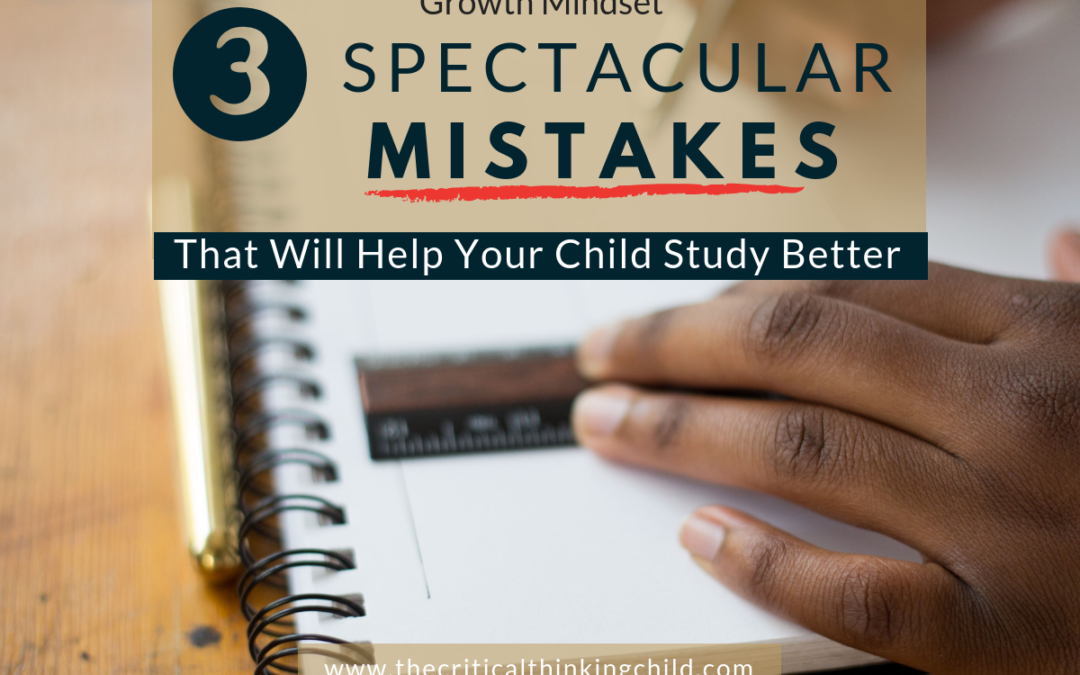Did you know that making mistakes is great for young learners? This may fly in the face of what you remember from your own days in the classroom, but mistakes are actually helpful to the learning process. Students don’t learn without stretching themselves, and that means they will struggle. But what can be a frustrating error on the surface can be turned into a teachable moment.
Here are three so-called “mistakes” that are, in reality, spectacular opportunities to improve the learning process. All three of these can help students improve their math, reading and study skills.
Spectacular Mistake #1: Using a pen for math problems
Students at school and at home are probably accustomed to using pencils for math problems so that they can erase their mistakes. During standardized tests, this is a great strategy, but for practicing at home and at school, a pen is a better option.
Why? Because, although many teachers and parents balk at the idea of using a pen for math, there are many advantages to this practice. Most notably, a pen allows students, parents, and teachers to quickly see where mistakes in reasoning are made. This allows them to target a specific area of need. When students made a mistake, they can retrace their steps to see exactly where the error happened and work to not only correct it, but to understand why the mistake happened in the first place.
This is helpful because students often simply start over when they come up with the wrong answer on a math problem, instead of finding one small error and fixing their process from the error onward. Many times, the problem is a small, careless mistake and there is no reason to restart the problem completely.
Even when larger errors are made, being able to see the thinking process is invaluable for learning. When students can see their mistakes and correct those mistakes on their own, they take ownership of their own learning and become independent learners. They also can see that mistakes are not inherently bad. They are just a part of the learning process.
Spectacular Mistake #2: Speed-Reading
Speed-reading, or reading too fast, is usually a red flag for teachers because they worry that students don’t comprehend what they are reading.
However, reading a passage for the first time without worrying about unknown words is helpful. In fact, adults do this all the time. Scanning the text gives students an idea of the topic and improves overall fluency.
Instead of discouraging speed reading, make sure students take it a step further. After the first read through, guide your student to reread the passage slowly. This lets them focus on key words to get greater meaning from the text. It also allows them to identify words they do not know. Start small with this strategy. Scan paragraphs first, and then build up to longer sections of text. Your student will be absorbing more complex texts in no time!
Spectacular Mistake #3: Doodling during note taking
Teachers and parents often discourage students from doodling because they think it means they’re not paying attention. However, for many students doodling is a focus strategy. And, just like speed reading, this is something adults do all the time. How often do you see a colleague doodling during a work meeting while still contributing and paying attention?
When you see your child doodling, try not to discourage this; often the drawings help them express their thoughts visually. They may even draw pictures that are directly related to the discussion. Many students are proud of their doodles and are eager to show them off to parents and teachers. When your child comes to you with a doodle, try asking them about it. See if they can recall what the doodle is a visual representation of, or when and why it was created.
Turning mistakes into learning opportunities is a matter of changing your mindset!
Instead of reprimanding your child for their “mistakes,” take each one as a teachable moment to improve your child’s confidence and learning!
What other “mistakes” are learning opportunities in disguise?




Trackbacks/Pingbacks